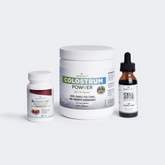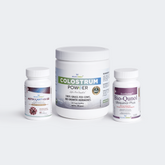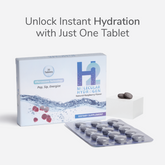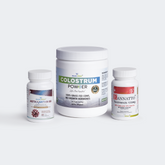When Does Breast Milk Come In?
Estimated Reading Time: 6 minutes
|Having a new baby is one of the most special times in your life. But let’s be honest; it can also feel overwhelming. New moms often have many questions, especially about feeding their babies. One of the most common ones is:
“When will my breast milk come in?”
Whether preparing for your first baby or already home with your newborn, learning how breast milk works can help ease stress.
This article explains everything you need to know simply, from how your body makes milk to what to do in case of delayed ejection.
The Three Stages of Breast Milk
Your body starts making milk before your baby is even born. But it doesn’t all come at once. Breast milk comes in three stages, which helps your baby grow and stay healthy.
1. Colostrum (Birth to Day 2–5)
Colostrum is the first milk your body makes. It’s thick, sticky, yellow, or golden-colored. That’s why people sometimes call it “liquid gold.”
Even though there isn’t much of it, colostrum is full of nutrients and potent antibodies. These help your baby fight off sickness in their first days of life.
Some moms worry they aren’t making enough. But don’t worry: your baby’s stomach is tiny right after birth (about the size of a cherry). So, even small amounts of colostrum are perfect for them.
2. Transitional Milk (Day 3–7)
A few days after birth, your milk starts to change. This is called transitional milk. It becomes thinner and lighter in color, and there is more of it.
This milk provides your baby with more calories, which helps them grow stronger and become more active. It still has essential immune boosters, too. Your baby’s stomach is growing quickly and can hold more milk by this time.
3. Mature Milk (By the End of Week 2)
By the end of the second week, your milk becomes mature. It’s thinner than colostrum and usually white or bluish-white. It looks more like “regular” milk.
Mature milk is high in water, fat, and nutrients. It provides your baby with everything they need to continue growing and stay hydrated. It keeps changing to meet your baby’s needs over time.
When Does Breast Milk Usually Come In?
Most moms notice their milk “coming in” about 2 to 5 days after giving birth. That means your body is switching from colostrum to transitional milk, and you’ll likely feel the formation of more milk.
However, this timeline serves as a general guide only. Some moms get their milk earlier, and some get it later.
Here are a few reasons why timing can be different:
-
Type of Birth
If you had a C-section, milk may take a little longer maybe 1–2 extra days.
-
Breastfeeding Frequency
Feeding or pumping often in the first few days tells your body to start making more milk. If that doesn't happen, milk production might be slower.
-
Different Hormone Levels
After delivery, hormones like prolactin and oxytocin kick-start milk production. If these levels are low or delayed, your milk may take longer to come in.
Relax! Don’t panic if your milk isn’t in on day 2 or even day 4. Everybody is different.
Signs That Your Milk Is Coming In
Wondering how you’ll know when your milk is starting to come in? Here are some signs many moms notice:
-
Your breasts feel fuller, heavier, or warmer
-
You feel a tingling feeling or notice milk leaking.
-
Your baby swallows more often while feeding.
-
Your baby’s poop changes from dark green/black (meconium) to yellow and seedy.
You may also feel a little discomfort, swelling, or tightness in your breasts. This is called engorgement, and it’s normal. It means your body is adjusting to the increased milk intake.
What If Your Milk Is Delayed?
You may feel worried or frustrated if your milk hasn’t come in by day 5 or 6. That’s completely normal. But the good news is—there’s usually something you can do to help things along. Let's explore them.
What You Can Do to Help Your Milk Come In
Here are some simple ways to encourage your milk to come in faster and increase your supply:
1. Breastfeed Often
Try to breastfeed every 2 to 3 hours, even at night. This tells your body that your baby needs more milk.
2. Skin-to-Skin Time
Hold your baby close to your bare skin. This helps your body release oxytocin, a hormone that helps milk flow.
3. Use a Breast Pump
If your baby is not latching well or not feeding much, try using a breast pump after feedings. Pumping helps signal your body to make more milk.
4. Eat and Drink Well
Your body needs energy and water to make milk. Be sure to drink plenty of fluids, eat healthy foods, and rest whenever possible.
5. Stay Calm and Ask for Help
Being tired or stressed can slow down the process. Try to relax and ask for help when you need it from your partner, family, friends, or a professional.
Also Read: 6 Gut Essentials Every Mom Should Know.
When to Get Help
Sometimes, talking to a lactation consultant (a breastfeeding expert) or your baby’s doctor is a good idea.
Get help if:
-
Your milk hasn’t come in by day 5 or 6
-
Your baby does not have at least 6 wet diapers a day after the first week.
-
Your baby is often sleepy and not feeding well.
-
Your baby is losing a lot of weight (more than 10% of their birth weight).
-
You’re in pain, or your baby is not latching properly.
Asking for help is a strong and loving feeling for you and your baby.
Final Thoughts: You’ve Got This!
Breastfeeding can be a learning curve. It takes time for you and your baby to get the hang of it. Some days may feel hard, and that’s okay.
Here are 4 reminders:
-
There’s no perfect timeline; every mom’s body is different.
-
Whether you feed your baby by breast, bottle, or both, they are loved and nourished.
-
Don’t compare yourself to others. Your journey is your own.
-
You are doing great, even if it doesn’t feel like it.
What matters most is that you love and care for your baby.
So, take a deep breath. You’ve got this.
Quick FAQ
Q1: Can I run out of colostrum before my milk comes in?
A: No. Your body makes just the right amount of colostrum for your newborn’s tiny tummy. You won’t run out before your milk changes.
Q2: Is it okay to use a formula while I wait for my milk?
A: Yes. Your baby’s health comes first. Some moms use formula at first and then switch to full or partial breastfeeding later.
Q3: Will pumping help my milk come in faster?
A: Yes. Pumping after feeding can help increase your milk supply by signaling your body to produce more milk.
Q4: Should my breasts feel full all the time?
A: Not necessarily. After your milk supply stabilizes, your breasts may feel soft, even though they are still producing milk.
Disclaimer: This article is for educational purposes only. It is not a replacement for medical advice. Always consult your doctor or a healthcare professional if you have health concerns or before starting any new treatments.
References
-
Breastfeeding and delayed milk production (no date). https://www.nationwidechildrens.org/conditions/health-library/breastfeeding-and-delayed-milk-production#:~:text=Delayed%20Milk%20Production-,Breastfeeding%20and%20Delayed%20Milk%20Production,-For%20the%20first.
-
Breastfeeding FAQs: Getting started (for parents) (no date). https://kidshealth.org/en/parents/breastfeed-starting.html#:~:text=FAQs%3A%20Getting%20Started-,Breastfeeding%20FAQs%3A%20Getting%20Started,-en%20espa%C3%B1ol%3A.
-
The Phases of Breast Milk | WIC Breastfeeding Support (no date). https://wicbreastfeeding.fns.usda.gov/phases-breast-milk#:~:text=Print-,The%20Phases%20of%20Breast%20Milk,-Learn%20about%20the.
-
When does milk come in: Your questions answered | Philips Avent (no date). https://www.philips.co.uk/c-e/mo/parents-guide/for-professionals/when-does-milk-come-in.html#:~:text=When%20does%20milk%20come%20in%3F%20A%20guide%20to%20starting%20breastfeeding.





































